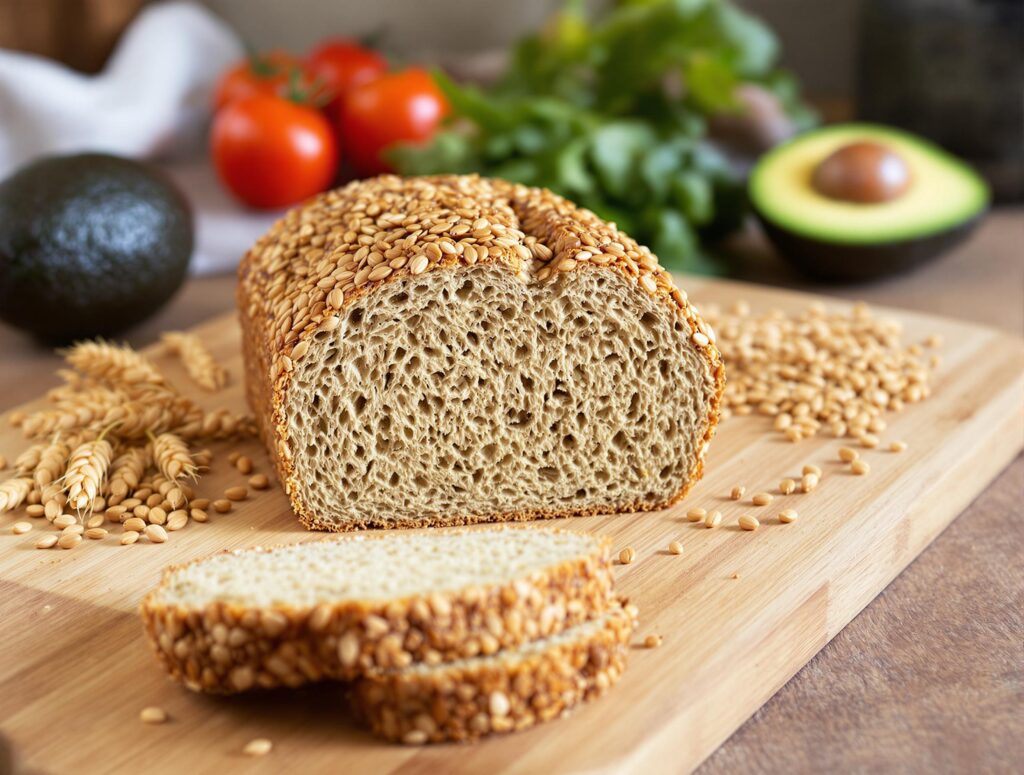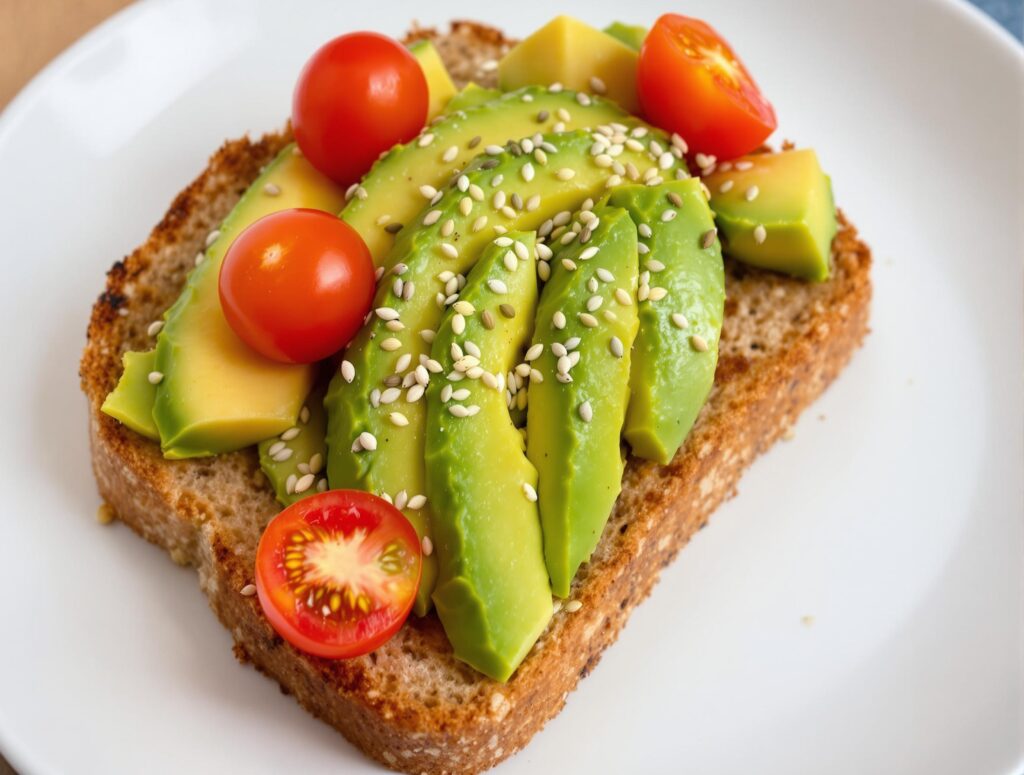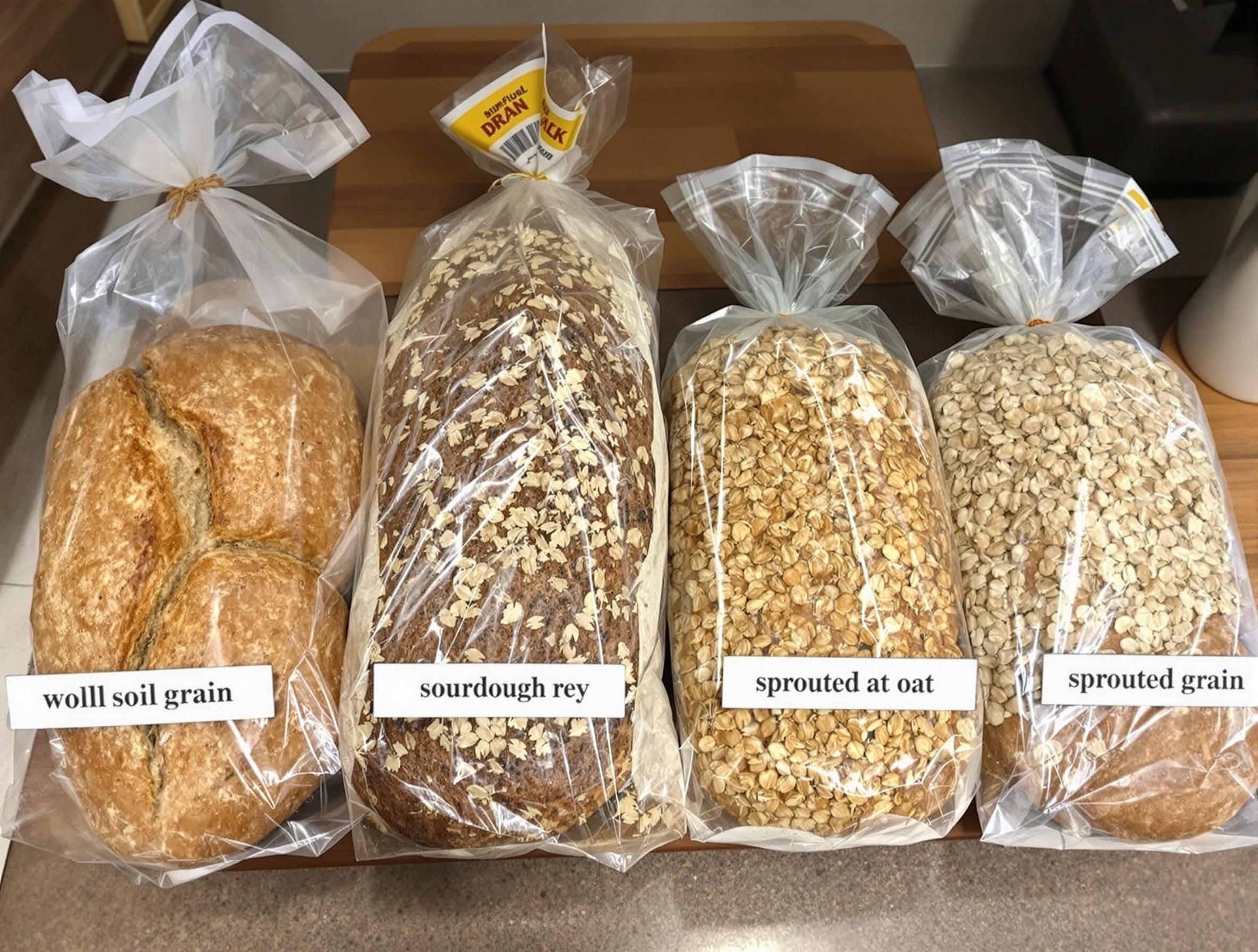Number 1 Healthiest Bread is one of the most common foods around the world. It’s simple, delicious, and can be part of a healthy diet. But with so many types of bread available—white, whole grain, sourdough, and more—how do you know which one is the healthiest? If you’ve ever stood in the bread aisle feeling confused, you’re not alone.
Choosing the healthiest bread isn’t just about avoiding empty calories. It’s about picking a type of bread that gives your body the nutrients it needs. Some breads can help you stay fuller for longer, improve digestion, and even boost your energy.
In this article, we’ll explore what makes bread healthy, compare popular types of bread, and reveal the number one healthiest bread. By the end, you’ll know exactly which loaf to pick on your next grocery trip!
Table of Contents
What Is Healthy Bread?
Before finding the number one healthiest bread, it’s important to understand what makes bread healthy. Not all bread is created equal. Some types are loaded with refined flour and sugar, while others are packed with nutrients that benefit your body.
Key Qualities of Healthy Bread
- Whole Grain Ingredients
Healthy bread starts with whole grains. Whole grains keep all parts of the grain intact, like the bran, germ, and endosperm. This means the bread retains more fiber, vitamins, and minerals.- Examples of whole grains include whole wheat, oats, barley, and quinoa.
- Fiber-rich breads keep you full longer and help with digestion.
- Minimal Processing
Healthy bread has fewer ingredients. A good rule is to look for bread with ingredients you can recognize and pronounce. Avoid bread with artificial preservatives, added sugar, or unhealthy oils. - High in Fiber
One of the main features of healthy bread is its fiber content. Fiber helps improve digestion, stabilize blood sugar levels, and keep you full for hours. Healthy bread often has 3-5 grams of fiber per slice. - Low in Added Sugar
Many breads, even “healthy” ones, contain added sugar. Too much sugar isn’t good for your body and can lead to weight gain or energy crashes. Always check the nutrition label to ensure the bread is low in sugar. - Good Source of Protein
Protein helps repair muscles, provides energy, and keeps you feeling full. Some breads, like those made with seeds or nuts, naturally offer a higher protein content.
Why Does It Matter?
Choosing healthier bread can make a big difference in your diet. Whole grain and fiber-rich breads improve digestion and give you steady energy. On the other hand, overly processed bread can cause blood sugar spikes and leave you hungry soon after eating.
Now that we know what to look for, let’s dive into the types of bread people often consider healthy. Which one stands out as the best choice?
Top Contenders for the Healthiest Bread
There are many types of bread in the market that claim to be healthy. Let’s compare some of the most popular options to see how they stack up.
1. Whole Grain Bread
Whole grain bread is made from flour that uses the entire grain kernel, including the bran, germ, and endosperm. This type of bread is packed with nutrients like:
- Fiber: Supports digestion and keeps you full.
- Vitamins and Minerals: Such as B vitamins, iron, and magnesium.
Pros:
- High in fiber and essential nutrients.
- Helps with weight management and heart health.
Cons:
- Some store-bought versions may include added sugars or preservatives. Always check the label.
2. Sprouted Grain Bread
Sprouted grain bread is made from grains that have been allowed to sprout before being ground into flour. Sprouting increases the grain’s nutrient levels and makes it easier to digest. Popular brands like Ezekiel bread are well-known examples of sprouted bread.
Pros:
- Higher in protein and fiber than most other breads.
- Easier to digest for some people with sensitive stomachs.
Cons:
- Can be more expensive and harder to find in regular stores.
3. Sourdough Bread
Sourdough bread uses a natural fermentation process, which creates a unique flavor and texture. The fermentation helps break down gluten, making it easier to digest compared to regular bread.
Pros:
- Good for gut health due to natural probiotics.
- Lower glycemic index (less blood sugar spikes).
Cons:
- Nutrient content can vary depending on the flour used. Whole grain sourdough is the best choice.
4. Rye Bread
Rye bread is made from rye flour, a type of grain that is lower in gluten and higher in fiber than wheat. It often has a dense texture and earthy flavor.
Pros:
- High in fiber, which keeps you feeling full.
- May help lower cholesterol levels.
Cons:
- Not all rye breads are created equal. Some versions contain refined wheat flour, so always read the ingredients.
5. Oat Bread
Oat bread includes oats or oat flour, making it a good source of soluble fiber, which supports heart health.
Pros:
- Helps lower cholesterol and maintain steady energy.
- Naturally sweet, with minimal added sugar.
Cons:
- Some oat breads mix in refined flour, which reduces their nutritional value.
6. Gluten-Free Bread
For people with gluten sensitivities or celiac disease, gluten-free bread is an alternative. These breads are made with ingredients like almond flour, rice flour, or potato starch.
Pros:
- Essential for those who can’t tolerate gluten.
- Some versions contain healthy seeds and nuts for added nutrients.
Cons:
- Often lower in fiber and nutrients compared to whole grain bread.

How Do They Compare?
Here’s a quick breakdown of how these bread types compare:
| Bread Type | Fiber Content | Digestibility | Nutrient Density |
|---|---|---|---|
| Whole Grain Bread | High | Moderate | High |
| Sprouted Grain Bread | Very High | Easy | Very High |
| Sourdough Bread | Moderate | Easy | Moderate |
| Rye Bread | High | Moderate | High |
| Oat Bread | Moderate | Easy | Moderate |
| Gluten-Free Bread | Low | Easy (for some) | Varies |
From this list, one bread clearly stands out as the healthiest option. Sprouted grain bread is often considered the number one healthiest bread because it’s rich in nutrients, easy to digest, and full of fiber and protein.
Why Sprouted Grain Bread Is the Healthiest Bread
After comparing all the popular types of bread, sprouted grain bread stands out as the healthiest choice. But what makes it so special? Let’s explore its benefits and why it deserves the title of the number one healthiest bread.
What Is Sprouted Grain Bread?
Sprouted grain bread is made from whole grains that are allowed to sprout, or germinate, before being used to make the dough. This process changes the structure of the grains, enhancing their nutritional value. Popular examples of sprouted bread include Ezekiel bread, which is well-known for its nutrient-packed ingredients.
Key Benefits of Sprouted Grain Bread
- Higher Nutrient Content
When grains sprout, they unlock more vitamins and minerals. Sprouting breaks down antinutrients like phytic acid, which can block nutrient absorption. As a result, sprouted grain bread contains higher levels of:- B Vitamins: Support energy production.
- Vitamin C: Boosts your immune system.
- Iron, Magnesium, and Zinc: Essential minerals for overall health.
- Rich in Fiber
Sprouted grain bread is loaded with fiber, which plays a major role in digestion. High fiber content keeps your gut healthy and helps regulate blood sugar levels. Just one slice of sprouted bread can provide around 3-5 grams of fiber. - Improved Protein Content
Sprouting boosts the protein content in grains. This makes sprouted grain bread a great option for anyone looking to add more protein to their diet. Protein helps repair muscles, keeps you full, and provides steady energy. - Easier to Digest
The sprouting process starts breaking down starches and gluten in the grains. This makes the bread easier to digest, even for people who sometimes experience bloating with regular bread. - Low Glycemic Index
Sprouted grain bread has a lower glycemic index compared to refined breads. This means it won’t spike your blood sugar levels as much, helping you feel full longer and avoid energy crashes. - No Refined Ingredients
Quality sprouted bread is made without refined flour, added sugars, or preservatives. It typically includes a blend of sprouted whole grains like wheat, barley, millet, and lentils, making it a clean and nutrient-dense choice.
How Sprouted Grain Bread Compares to Other Breads
Here’s a closer look at how sprouted grain bread stands out when compared to other “healthy” breads:
| Feature | Sprouted Grain Bread | Whole Grain Bread | Sourdough Bread | Oat Bread |
|---|---|---|---|---|
| Nutrient Content | Very High | High | Moderate | Moderate |
| Fiber Content | Very High | High | Moderate | Moderate |
| Protein Content | High | Moderate | Low | Low |
| Digestibility | Very Easy | Moderate | Easy | Easy |
| Blood Sugar Control | Excellent | Good | Good | Moderate |
As shown, sprouted grain bread checks all the boxes. It’s nutrient-dense, easy to digest, and packed with fiber and protein.
Who Should Eat Sprouted Grain Bread?
Sprouted grain bread is an excellent choice for almost anyone, but it’s especially beneficial for:
- Health-Conscious Individuals: Those looking for a clean, nutrient-dense bread option.
- People with Digestive Sensitivities: The sprouting process makes it easier to digest.
- Fitness Enthusiasts: Higher protein content supports muscle repair and energy.
- People Managing Blood Sugar: Its low glycemic index helps keep blood sugar stable.
If you’re aiming for the healthiest bread, sprouted grain bread is the best option to include in your daily meals.

More inspiring eats you can’t miss:
Can You Have Low-Carb Bread On Keto? The Ultimate Guide!
What Bread Is a Complete Protein? Find Out the Best Protein-Packed Options!
FAQs
1. What is the healthiest bread?
Sprouted grain bread is the healthiest because it’s high in nutrients, fiber, and protein, and easier to digest.
2. Is sprouted grain bread gluten-free?
No, it usually contains gluten. Gluten-free options with sprouted grains like quinoa or rice are available.
3. How is it different from whole grain bread?
Sprouted bread uses grains that have started to sprout, increasing nutrients and digestibility.
4. Can it help with weight loss?
Yes, its high fiber and protein content keep you full longer and reduce overeating.
5. Where can I buy it?
You’ll find it in health food sections, natural food stores, or online. Look for brands like Ezekiel bread.
6. How should I store it?
Keep it in the fridge or freezer since it has no preservatives. Toast slices straight from frozen if needed.
Conclusion
Choosing the right bread can make a big difference in your health, and sprouted grain bread is the clear winner. It’s packed with fiber, protein, and essential nutrients, making it a smart choice for anyone looking to improve digestion, manage weight, and enjoy steady energy levels.
Unlike refined breads, sprouted grain bread offers all the benefits of whole grains but in a more digestible and nutrient-dense form. Whether you’re making toast, sandwiches, or pairing it with your favorite meals, sprouted grain bread is a delicious and healthy option.
Next time you’re in the bread aisle, reach for sprouted grain bread—you’ll be making a simple yet powerful choice for your health. 🍞

